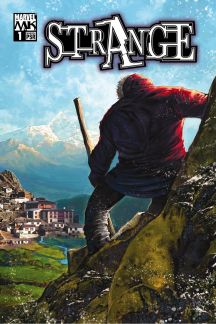My Comic History:
I'm going to be completely honest; I am relatively new when it comes to comics. I was prompted to finally pick up a comic in 2015 in preparation for Captain America: Civil War. I devoured the entire Civil War story line from 2006 (about 100 individual comics). Although Captain America: Civil War was completely different from the comic it was based on, I can honestly say that my enjoyment was greatly enhanced after reading the comic.
After reading Civil War I began to dive even deeper into Marvel. Next on my list was to prepare for Ant-Man since I knew nothing about the character. I figured there was no better place to start than the beginning, so I read Hank Pym's story Tales to Astonish #27 by Stan Lee and Steve Ditko, then jumped to #35 where Ant-Man makes his official debut and read all the way to #49 when he becomes Giant-Man. Then when Ant-Man came out I couldn't have been happier with how the character turned out.
So although I've only been reading comics for a short time, the ones that I have read allow me to learn more about the characters and have a greater appreciation for how they are portrayed on screen.
How to Read These Comics:
Marvel Unlimited
One tool that helped me dive into the extensive Marvel library--while still saving money--was subscribing to Marvel Unlimited. Marvel Unlimited has an extensive catalog going all the way back to Marvel's creation. There are holes in many of the old stories, but overall it has any and all essential readings. Marvel Unlimited usually offers a month trial and then subscriptions can be paid monthly or yearly. The biggest downside is that new comics don't come onto Marvel Unlimited until 6 months after its print debut, but if you don't mind waiting 6 months for a comic, this is a perfect choice.
Comixology
Comixology is my other go-to app that offers digital comic books. You have to pay per issue, but depending on how much issue is, and how much you want to read, this could be an easy choice. Additionally, if the comic is newer (within past 6 months) this is the only digital way to get it.
What I'd Recommend:
Now although my comic knowledge is limited, I have read a good amount of Doctor Strange and I think that I can offer a quick glimpse into some of the best reading in order to understand the character.
Strange Tales #110-115
Credits: Stan Lee (W), Steve Ditko (A)
Year: 1963
Best Source: Marvel Unlimited
Note: #110-114 is covered as a Human Torch story, but the last 5-ish pages of each issue are Doctor Strange with #115 being a fully dedicated Doctor Strange comic.
As I said before, what better place is there to start than at the beginning? These issues are great because it allows you to meet a few of Doctor Strange's top villains and also #115 goes into his origin story as explained by Stan Lee.
One thing to remember is that the '60s were a very different time in comics. The pages tended to be VERY dense with material. It can get wordy at times, but since many of these stories are only 5 pages, it isn't too overwhelming.
Doctor Strange: The Oath #1-5
Credits: Brian K. Vaughn (W), Marcos Martin (A)
Year: 2006
Best Source: Marvel Unlimited or Comixology
Note: This is considered by many to be the best Doctor Strange story.
In The Oath Doctor Strange is wounded and has to work to save himself, his servant Wong, and figure out who would have him killed all before his time runs out.
There is a lot to like about The Oath. We meet the night nurse, we feel that overwhelming care that Doctor Strange has for Wong, and we also learn about many of Doctor Strange's powers.
Strange #1-6
Credits: Straczynski & Barnes (W), Brandon Peterson (A)
Year: 2004
Best Source: Marvel Unlimited or Comixology
Note: One of many retellings of Doctor Strange's origin.
This is an origin story of Doctor Strange, but puts him in the modern day. The story is pretty similar to Strange Tales #115 but does allow a more expansive arc.
What I personally like most about these issues is the art. Many Doctor Strange comics utilize art that is a little difficult to follow to show the bizarre magic side of the Marvel Universe. However, in Strange Peterson uses very crisp and clean art. And while I can see it as a turn off to some people, it was a huge selling point for me.
Doctor Strange #1-5
Credits: Jason Aaron (W), Chris Bachalo (A)
Year: 2015
Best Source: Comixology
Note: This is Doctor Strange's current comic run. (Be careful, there is a 2009 run with the same name)
What can I say about this most current run of Doctor Strange besides the fact that I absolutely love it? Because of my access to Marvel Unlimited, there are very few comics from Marvel that I actively buy, however this is one that I rush to read every month.
The story is great and the art is fantastic, but one thing that I love about it is that Jason Aaron has introduced a new concept into Doctor Strange that I don't think has ever been done before--every time Doctor Strange uses a spell it comes with a price. That price usually manifests itself as a sickness. So he spends many of the issues battling an inter-dimensional being while trying to hold back fainting and vomit. While it may sound disgusting, it adds another level to Doctor Strange that hasn't been tackled in the past.
Conclusion:
Although each and every one of these runs are fantastic and there are many more out there that are definitely worth your time, if I were to pick only two for you to read, it would be Strange #1-6 from 2004 and Doctor Strange #1-5 from 2015. These two will give you a perfect understanding of who Doctor Strange is and what we can expect to see from the movie coming out in November.
So those are some of my favorite Doctor Strange comics, do you have any favorites? And what other comic characters would you like some recommendations for? Leave your comments below and remember to always keep it unpopped.






No comments:
Post a Comment